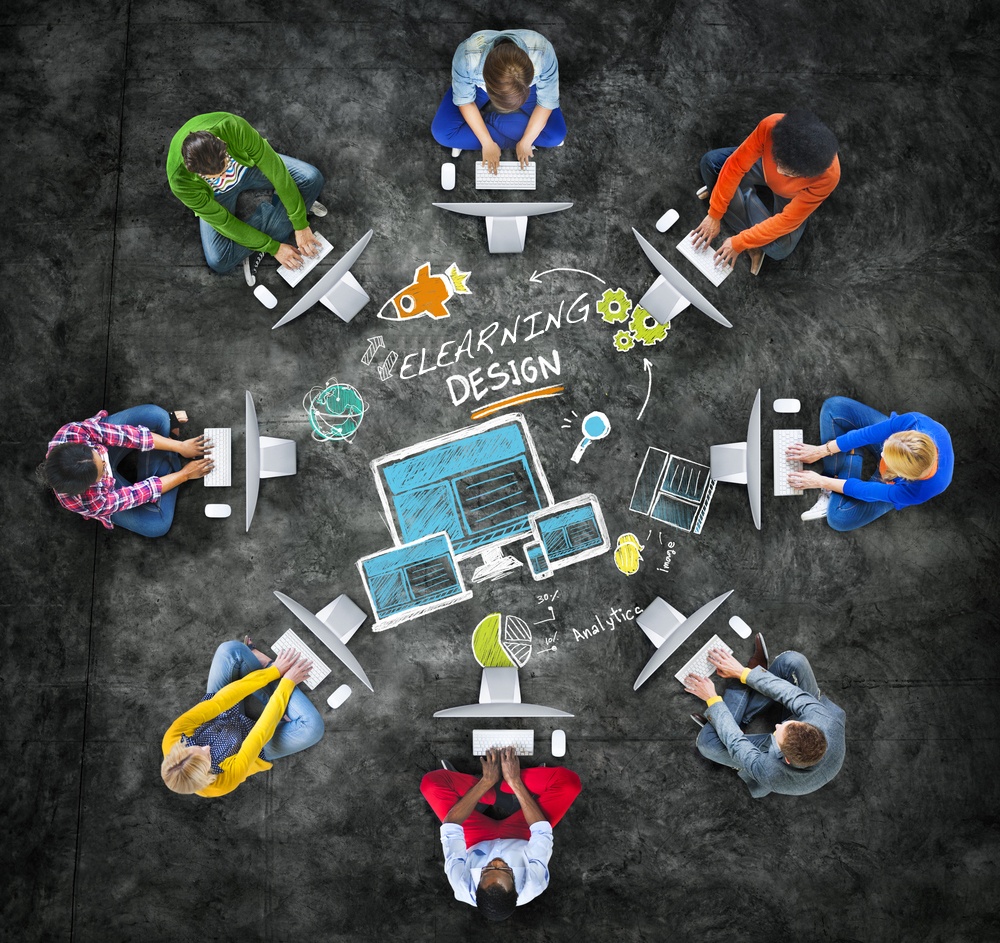Many people have questions about eLearning Templates.
Can templates help us build better online courses?
Do they really speed up development time? Can we still be creative with eLearning Templates? Will my design team “out grow” the eLearning Templates? Let’s look at some benefits of using eLearning Templates and address the questions above.
Benefits of Using eLearning Templates
- Streamline Marketing and Branding
Companies spend tons of money to ensure that their branding and marketing is creative, consistent, and effective. The training department could easily use the marketing department’s assets to create great looking eLearning Templates. eLearning Templates should include corporate branding such as: colors, logos, styles, images, etc. This adds a level of visual professionalism and ties your training to the company.Once the branding is built into the eLearning templates, the team no longer has to search for logo files, color hex codes, or branding style guides. - Increase Production / Capacity
 A team can produce content more quickly with eLearning Templates. Instead of recreating a tab interaction from scratch each time, turn it into a template. There are many layouts, interactions, and games that get used over and over again during the process of creating courses. Any time a redundant asset is needed, the team should create a template.Once a team learns how to use eLearning Templates and which ones are available, they can quickly build content. eLearning Templates free up a lot of time that can now be spent focusing on writing great content and being more creative.
A team can produce content more quickly with eLearning Templates. Instead of recreating a tab interaction from scratch each time, turn it into a template. There are many layouts, interactions, and games that get used over and over again during the process of creating courses. Any time a redundant asset is needed, the team should create a template.Once a team learns how to use eLearning Templates and which ones are available, they can quickly build content. eLearning Templates free up a lot of time that can now be spent focusing on writing great content and being more creative. - Increase Team Skills and Talent
Most eLearning designers and developers are not programming and/or multimedia experts. In fact many of them have fairly novice skills. That’s why rapid eLearning tools are so popular. We need to find a way to help them be successful at creating engaging, interactive content. Use eLearning Templates! Once the framework of a template is created, it becomes much easier for a novice designer to build content. Many users get stuck when they must build something from scratch. However, if the framework is ready, they can easily populate the template and manipulate the pieces.As users gain more experience they can take the eLearning Templates to new heights by adding to them. They can also begin to create their own eLearning Templates. - Decrease Technical Errors
The idea of using an eLearning Templates is to create the framework once and then replicate it. Spend the time up-front to make sure that a template is bug-free. Test it in your authoring tool, have a designer test the “ease of use”, and don’t forget to try it on your LMS and final user platform. For example, you may want to test it in various browsers and mobile devices.
Conclusion
Overall, eLearning Templates can benefit any eLearning design team. They can speed up your development cycle, increase your team’s skills, and decrease production errors.
Originally published on November 19, 2012







